Peugeot Aims To Make Racing History With Wild 9X8 Hypercar
With a twin-turbo 670-hp V6 in the rear, a 270-hp electric motor up front, and a radical aerodynamic design featuring “light claws,” the 9X8 marks a new chapter in hybrid sports cars.
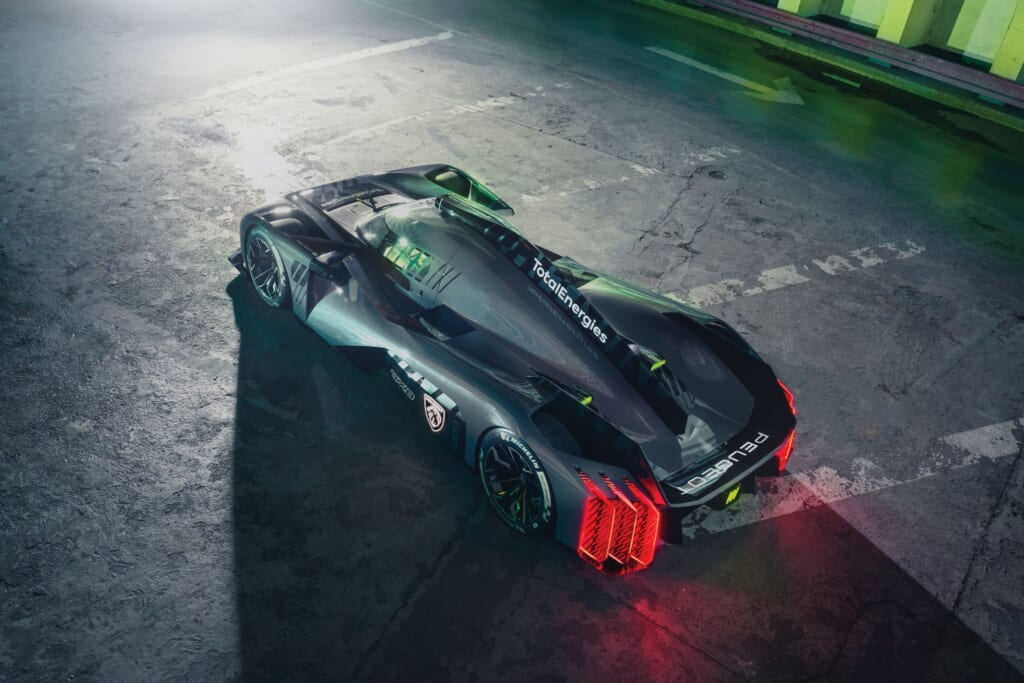
Automotive multinational Stellantis is about to take the world by storm, with a new Peugeot 9X8 Le Mans-bound hypercar that looks like it punched through the metaverse from a warped Marvel comic into the real world.
It is bonkers in almost every way; the mind-meld of Darth Vader and Baron Harkonnen’s fantasy car collection, complete with fins, claws and Kryptonite detailing—to keep it visible from full tilt to brutal braking as it makes the Mulsanne turn at Le Mans. The only thing it seems to be lacking is a rear wing.
Batman is surely jealous, and every car-obsessed kid from here to Timbuktu will want a poster of this thing on their wall whether it wins or not, together with a skin for their Gran Turismo 7 ride. Needless to say, we can’t wait to see what the drivers’ outfits look like, and if they come with cloaking devices. We’re expecting them to be slicker than Sting in his Feyd-Rautha S&M get-up from David Lynch’s rendition of Dune.
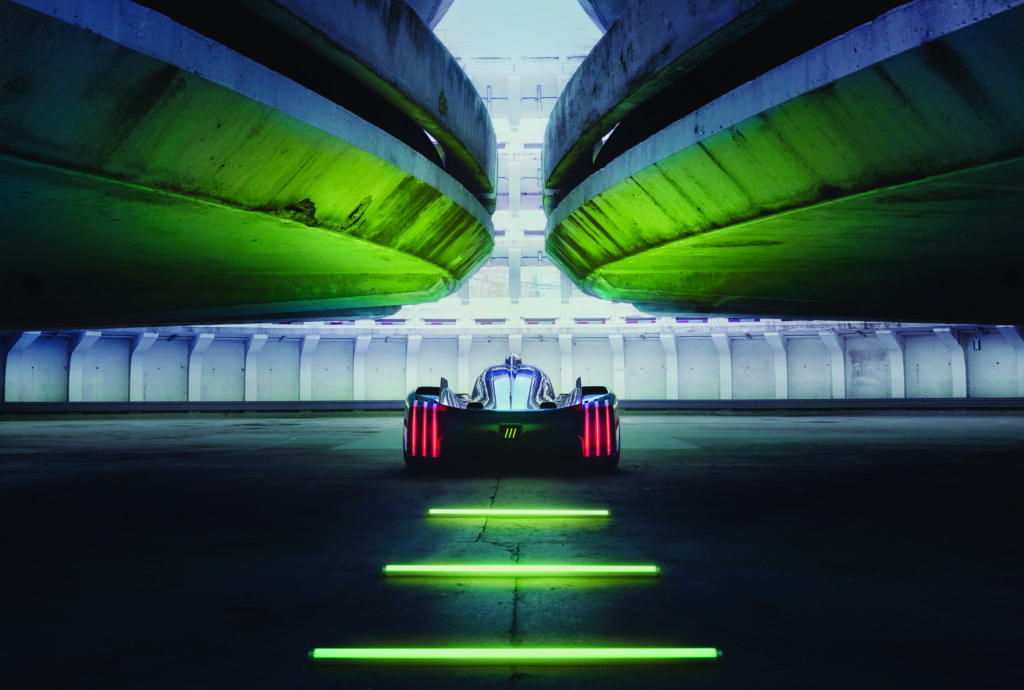
Ex-Formula One driver Paul Di Resta, current Alfa Romeo Kevin Magnussen, and 2013 Le Mans winner Loic Duval were the very first to drive the car and give their feedback. But sooner or later we will all get to experience the full package as Peugeot Sport yet again makes the pilgrimage to win on the holy ground of motor racing at the Le Mans 24 Hours. For they are re-entering the fray in the new Le Mans Hypercar (LMH) class of the World Endurance Championship in 2022.
Before they get to Le Mans, the Peugeot 9X8’s first official race this summer is likely to be at the legendary Circuit Spa-Francorchamps in Belgium, home of the hair-raising Eau Rouge corner and dense, vertiginous, steaming forests reminiscent of the Forest Moon of Endor. I’ve personally experienced the weather there go from beach party to Moby Dick in the blink of an eye, making things get hairy fast even for the best machines with the finest pilots.
By the time the 9X8 reaches the starting grid, this beautifully-designed battle tank of blistering speed and technological wizardry will have been homologated in type and ready to go, meeting all of the “Balance of Performance” requirements of the FIA World Endurance Championship. Let’s not forget who the other competitors are for 2022 in the LMH category.
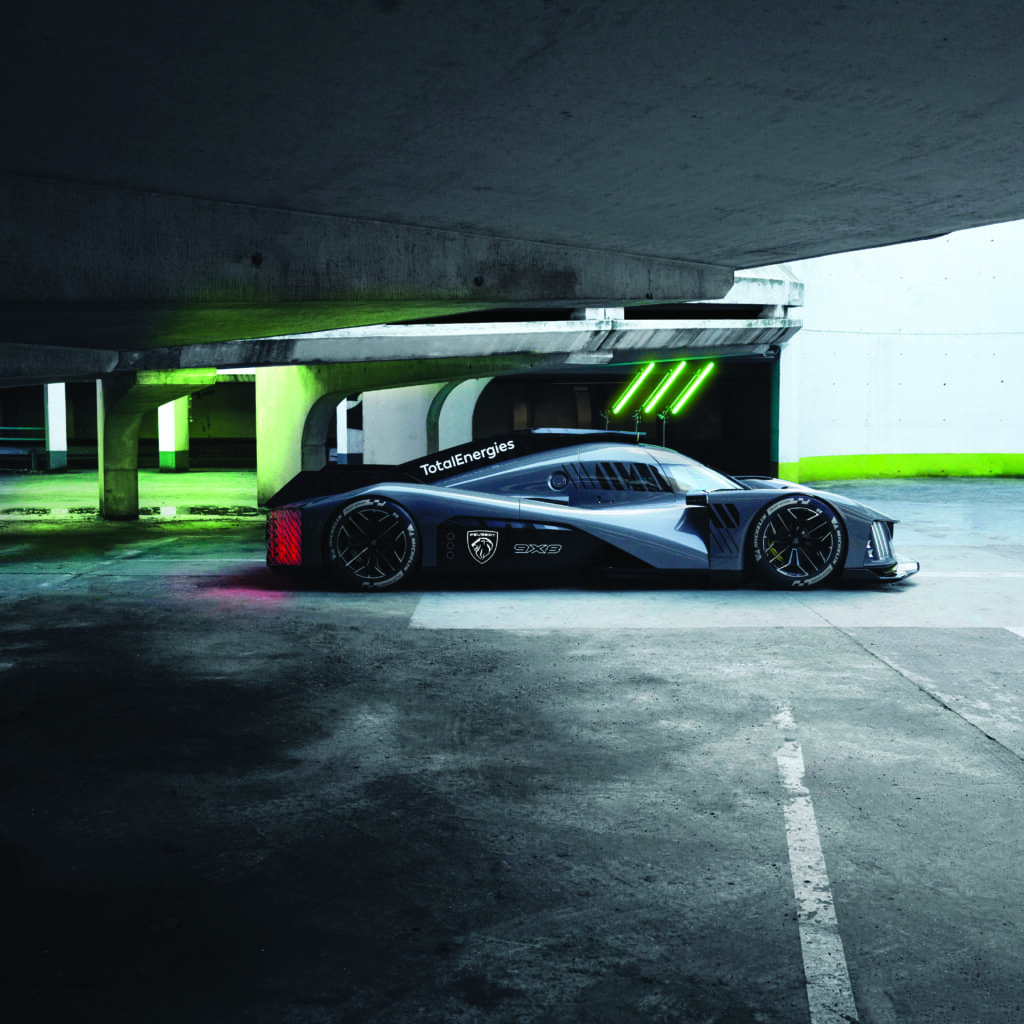
The all-conquering Toyota; Alpine, those other French tuning demons of motorsport days of old; and the new American-led team chasing the legend of Le Mans, Glickenhaus. Things are shaping up for the most entertaining season of racing in quite some time. But this is not Peugeot’s first rodeo. Many remember Ford taking the 1-2-3 at the Le Mans 24 Hours in 1966, but who also remembers the Peugeot 905 Evo 1 taking 1-2-3 in 1993? Or the Peugeot 908 taking 1-2 in 2009?
The Peugeot brand is steeped in automotive history, and like many blue-chip brands today began life as an industrial manufacturer, in this case in France way back in 1810 with a steel foundry producing band saws, umbrella frames and coffee grinders.
Then, as now, they were adopting and advancing new technologies, and built the first car to carry the Peugeot name in 1889, making them the world’s second-oldest car manufacturer and the oldest continuous car brand. By 1850, Peugeot had started stamping its products with the logo of a lion, symbolizing the toughness of their saw teeth, the flexibility of their blades, the strength of the steel and the speed of the cut.
This branding has been hard-baked into the very soul of the 9X8, as Matthias Hossann, Peugeot Design Director notes. “To ensure that the Peugeot 9X8 is unlike any other and can be easily identified day and night by everyone, we added luminous components to our work on the silhouette,” he says.
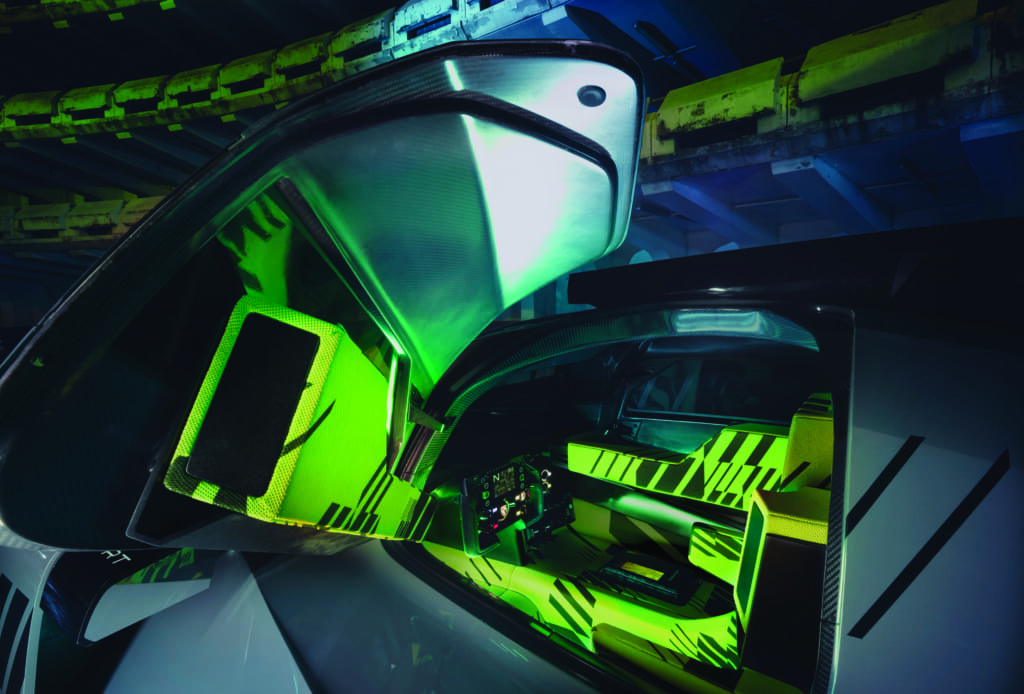
“For the light signature, the three [lion] claws—present on all our current production cars—was the obvious choice. We didn’t have too much trouble putting them on the front of our 9X8 Hypercar, but putting them on the rear required a lot of work. We’ve integrated the three light claws in separate composite components creating gaps through which air is extracted. We can’t wait to see their effect on the track.” Nor can we.
Observers may note that the 9X8 is a radical break from previous generations of racing cars, including Peugeot’s own. Perhaps the single most striking feature of the 9X8 is the absence of a rear wing. Having first appeared in endurance racing at Le Mans in 1967, no car has won in more than 50 years since without one.
Making the stark absence of a tea tray on the back or even the whiff of a duck-or-whale tail even more surprising. Is it possible to win without one? The boffins at Peugeot must think so. And before you bet against them remember that the pinnacle of Group C development was also an aero Peugeot with a revolutionary design.
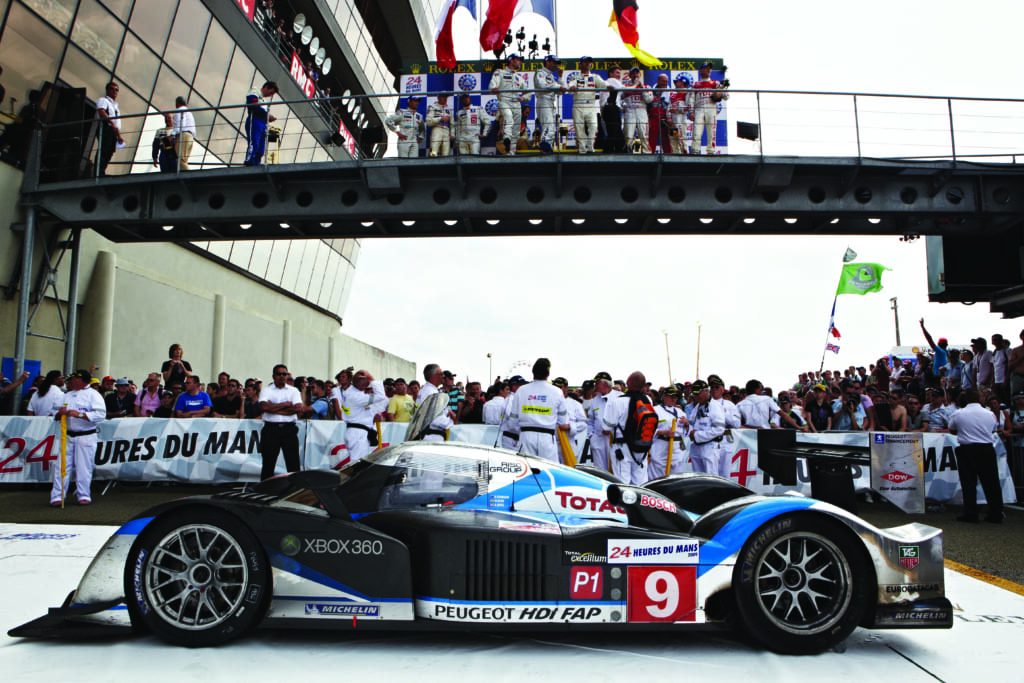
(Michael Haegele/Corbis via Getty Images)
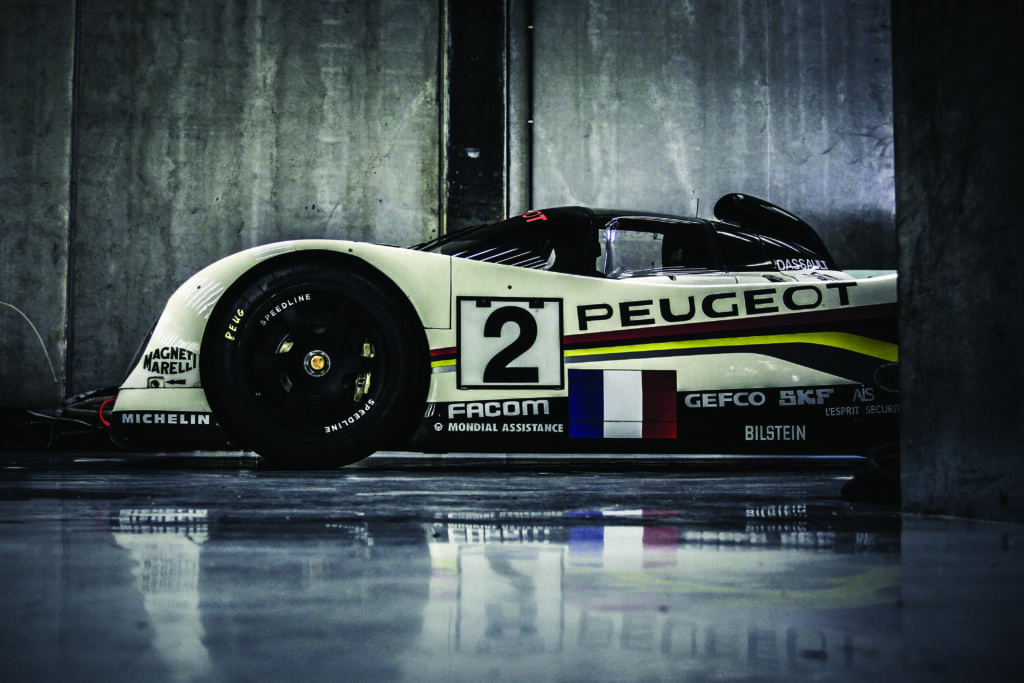
The 1993 Peugeot 905 Evo 2 didn’t get to race as it wasn’t as dialed-in as the well-tested 905 Evo 1, but some say its design created a “before” and “after” moment in endurance car design setting the scene for aerodynamic things to come. Just as the 9X8 will should it win.
Aside from the physics of how the 9X8’s aerodynamics will keep it glued to the tarmac, there is technology everywhere to be seen. The four-wheel drive hybrid propulsion system, sharing enough DNA with its road-going compatriots to qualify for LMH, combines a V6 2.6-liter twin-turbocharged 500 kW (670 hp) internal combustion engine at the rear with a 200 kW (270 hp) electric motor/generator in the front, sending power through a seven speed sequential gearbox.
“With the 9X8, Peugeot is starting a new chapter in hybrid sports cars,” says Peugeot Sport WEC Technical Director Olivier Jansonnie. “Performance is becoming more electric and more virtuous, without sacrificing anything in terms of competitiveness.” In accordance with the rules, the 9X8 cannot weigh less than 1030 kg (2,270 lbs), and the total power in use at any one time cannot exceed the total of 670 hp.
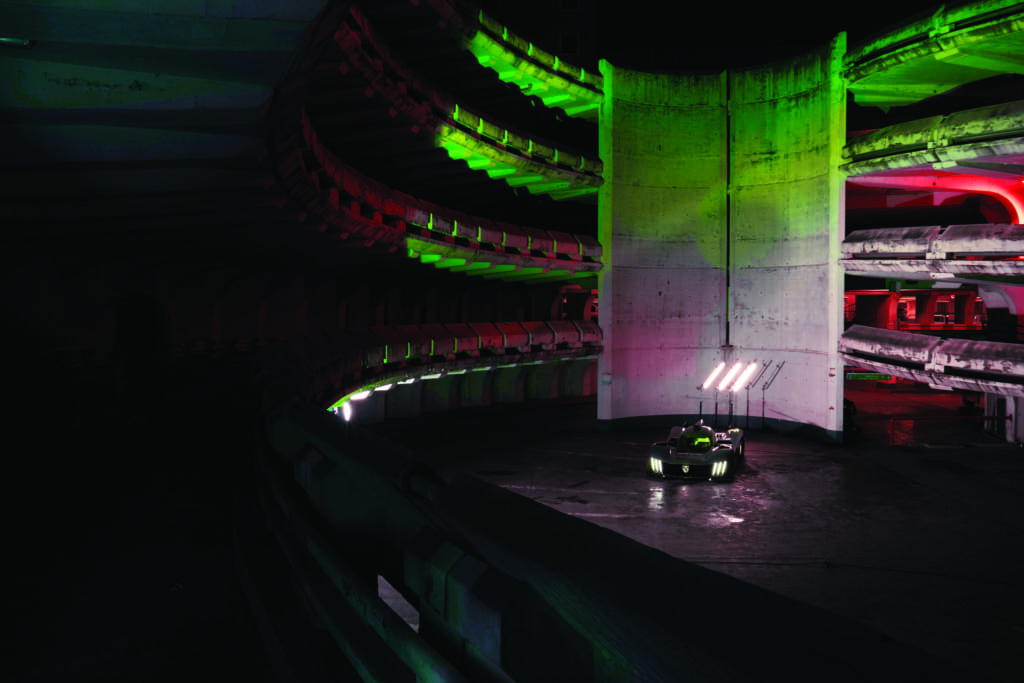
But it seems if nothing else, the 9X8 is on brand with Stellantis’ goals and dreams; after all, “Stello” is Latin for, “to brighten with stars,” and we can’t think of a better way to do that in 2022 than with the 9X8 blatting around glued to the tarmac by Jedi mind tricks. I for one want a poster for my wall. And a spin around the track.
